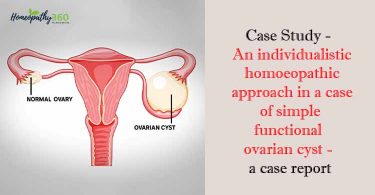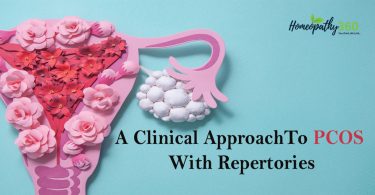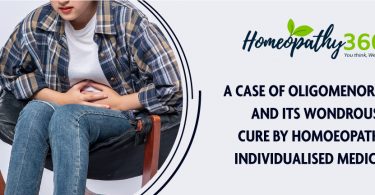Title:
Homoeopathic Management of Polycystic Ovary Syndrome Induced Infertility by using the Repertory of Homoeopathic Materia Medica by J.T. Kent: A Prospective Observational Study
Brief Resume of the Intended Work:
A. Research Question and Hypothesis:
1. Research question: Is individualized homoeopathic treatment using the Repertory of Homoeopathic Materia Medica by J.T.Kent helpful in management of PCOS induced infertility?
2. Research hypothesis:
Null hypothesis (H0)
– Kent’s repertory has no definite role in the management of PCOS induced infertility
Alternative hypothesis (H1)
– Kent’s repertory has a definite role in the management of PCOS induced infertility
B. Need for the Study:
According to surveys, most women with infertility live in the developing world, and have limited access to diagnostic tests or treatment and, often, no access to assisted reproductive technologies (Fathalla, 1992; Vayena, Rowe & Griffin, 2002) (2) and also if available, these treatment options are very costly and unaffordable for many sufferers and at the same time have so many side-effects and moderate success rate. Unlike other adverse life events, which may have a clear resolution, infertility is regarded as uniquely stressful because it can last for many years and for many will not be resolved (Berg & Wilson, 1990). Berg & Wilson (1990) have identified an infertility strain profile, characterized by increased anxiety, irritability, profound sadness, self-blame, lowered energy levels, social isolation and heightened interpersonal sensitivity. Almost all women presenting for treatment have been found to demonstrate some of these features (Berg & Wilson, 1990). The inability to have children damages both cultural and adult identity and the attribution of responsibility leads to social rejection and marginalization. (2)
So, it is required here that a study should be conducted to provide a safe and cost-effective method for PCOS induced infertility which helps to improve the quality of life and thereby will reduce its psychosocial impact.
Homoeopathic medicines are simple, safe and cost-effective. Hence, the efficacy of Homoeopathic medicines on infertile females due to PCOS needs to be explored.
C. Review of Literature:
Nowadays, infertility is a major health problem. According to WHO, the New infertility prevalence calculation shows that “One in every four couples in developing countries had been found to be affected by infertility.” (1)
In reviewing prevalence surveys, Schmidt & Munster (1995) found that current and lifetime prevalence of infertility ranged from 3.6% to 32.6%. They concluded that, overall, about 24% of the global population experiences either primary or secondary infertility, and that about 15% of the population of reproductive age will seek medical assistance to conceive. (1)
Similarly, the current incidence of Polycystic ovarian syndrome is fast increasing lately due to change in the lifestyle and stress. (5) Prevalence of PCOS in Indian adolescents is 9.13% (4) and PCOS causes more than 75% of cases of anovulatory infertility.(3)
Conventional management of infertility in polycystic ovary syndrome includes lifestyle modification as well as assisted reproductive technology such as ovulation induction, oocyte release triggering, IVF and surgery. Previously, metformin was recommended treatment for anovulation. A review in 2012 concluded that the benefit of metformin in the improvement of reproductive outcomes in women with PCOS is limited. (3) These medicines as well as technologies have many side effects and not within reach of many sufferers. On the other hand, Homoeopathy has no side effects, readily available and very cost-effective. Homoeopathy works with the holistic approach and therefore takes into consideration physical as well as mental symptoms of the patient. The Repertory of Homoeopathic Materia Medica by J.T. Kent (1897) is one of the three basic repertories. This repertory is based on the philosophical background i.e. from generals to particulars. This repertory gives more emphasis on mental generals. So all the psychological symptoms (which are more pronounced in infertile females) along with physical generals and particulars will be taken into consideration for repertorisation. There are many medicines recommended and well-proven in homoeopathy. Rubrics like sterility and cyst in ovaries contain 46 and 16 medicines respectively.
Recent researches in homoeopathy showed good results.
Homoeopathy for infertility treatment: a case series – Taking under consideration clinical aspects of infertility, the authors attempted to use it for treating female subfertility problems. With this study, the authors presented five cases of female infertility treated successfully with the use of homoeopathic treatment in a large obstetrics-gynaecology Hospital in Athens.(7)
Effectiveness of Homeopathic Treatment in Female Infertility- This study is currently recruiting participants, by Dr Anita Fernandes, Fr Muller Homoeopathic Medical College. Study started in 2015. (8)
D. Aims and Objectives:
The AIM of this study is to observe improvement in PCOS induced infertility by using Kent’s Repertory.
For this purpose, the following objectives are undertaken:
– To ascertain the usefulness of Kent’s Repertory in the treatment of PCOS induced infertility.
– To assess the rate of conception, in PCOS induced infertility, after individualized homoeopathic treatment.
– To assess the improvement in health-related quality of life in women with polycystic ovary syndrome (PCOS).
E. Materials and Methods:
1. Study setting: The study will be carried out in HOMOEOPATHIC MEDICAL COLLEGE & HOSPITAL. The sources of the samples will be the patients attending:
• Out-patient Department (OPD)
• Inpatient Department (IPD)
2. Study duration: 18 Months
3. Selection of samples: Samples will be selected on the basis of below-detailed inclusion/exclusion criteria from the patients visiting OPD, IPD and Peripheral OPDs. Sample size will be minimum of 30 patients.
4. Inclusion / Exclusion criteria:
Inclusion Criteria:
– Only female causes.
– Cases of PCOS diagnosed using Rotterdam criteria.
– Age group of 20-40 years.
– Primary and secondary infertility.
– Patient giving written consent to participate.
Exclusion Criteria:
– Age group below 20 years and beyond 40 years.
– All other causes of infertility (except PCOS), congenital defects.
– Women whose husband’s semen analysis is abnormal.
– Patient on other medications.
– Patient in need of medical emergency care.
– Patient unable to comply with the regular follow-ups.
5. Study design: A single-blind, non-randomized, non-controlled, open-labelled, prospective observational study.
6. Selection of tools: The following tools/ materials will be used for the conduction of this clinical trial:
– Case recording Performa along with follow-up sheet, to note down the information/ data collected from the patient.
– PCOSQ Questionnaire.
– Homoeopathic software (RADAR, version 10)
– Relevant investigations as per the need to justify the diagnosis and to check the prognosis like Ultrasonography of the pelvic region, Thyroid function test, etc.
– Consent form
– Standardised homoeopathic medicines.
7. Intervention, in detail: After proper case taking, 30 patients will be selected who will be fulfilling inclusion/exclusion criteria.
All the included patients will be prescribed homoeopathic medicines after repertorisation using the Repertory of Homoeopathic Materia Medica by J.T.Kent. Potency selection will be as per the symptoms of the case and susceptibility of the patient as assessed at the time of case taking. Further increase in potency or change in medicine will be done as and when required. All patients will be given appropriate dietary advice to reduce weight.
Relevant investigations like UPT, USG, etc. will be advised as and when required.
After regular intervals, each case will be assessed periodically to follow up the medicinal action through clinical assessment, as well as relevant laboratory investigations.
8. Data collection: Primary data will be collected from the patients before, during and after treatment. Secondary data will be taken from all available standard books, journals, articles, internet (like Pub Med etc.)
9. Data analysis: Data will be assessed by making a master chart in MS Excel spreadsheet and shall be statistically analyzed using the computer program.
10. Statistical techniques: Baseline descriptive data (categorical and continuous) will be presented in terms of absolute values, percentage, means, standard deviation (sd), confidence intervals (CI), etc. as appropriate. A paired t-test will be used for the analysis of the data.
11. Has Ethical Clearance been obtained from your Institution?
Will be obtained prior to the initiation of the study.
F. Expected outcome and it’s usefulness:
It is expected that Kent’s repertory will be proved to be effective in the treatment of PCOS induced infertility. This study will increase the scope of Homoeopathy and prove that this science of therapeutics is the best alternative to the conventional method of treatment with no side effects. This will further open various areas of research in the management of PCOS induced infertility.
G. References:
1. WHO, Sexual and reproductive health, http://www.who.int/reproductivehealth/topics/infertility/burden/en/
2. http://apps.who.int/iris/bitstream/10665/43846/1/9789241563567_eng.pdf
3. Infertility in polycystic ovary syndrome, https://en.wikipedia.org/wiki/Infertility_in_polycystic_ovary_syndrome
4. Nidhi R, Padmalatha V, Nagarathna R, Amritanshu R, Prevalence of polycystic ovarian syndrome in Indian adolescents
https://www.ncbi.nlm.nih.gov/pubmed/21600812
5. VG Padubidri SN Daftary, Hawkins & Bourne Shaw’s Textbook of Gynaecology, 15th edition, 2011
6. WHO-ICMART revised glossary
7. Kalampokas T, Botis S, Kedikgianni-Antoniou A, Papamethodiou D, Kivellos S, Papadimitriou V, Salvanos G, Paparistidis N, Gavaris I, Sofoudis C, Kalampokas E, Farmakides G, Vithoulkas G, Homeopathy for infertility treatment: a case series https://www.ncbi.nlm.nih.gov/pubmed/24779242
8. Dr Anita Fernandes, Fr Muller Homoeopathic Medical College, Effectiveness of Homeopathic Treatment in Female Infertility https://clinicaltrials.gov/ct2/show/study/NCT02175498?show_desc=Y#desc
9. Rotterdam ESHRE/ASRM-Sponsored PCOS consensus workshop group. Revised 2003 consensus on diagnostic criteria and long-term health risks related to polycystic ovary syndrome (PCOS). Hum Reprod 2004; 19: 41-47
10. Ferriman D, Gallwey JD. Clinical assessment of body hair growth in women. J Clin Endocrinol Metab 1961; 21: 1440-1447.
11. Scoring systems in acne vulgaris, Balaji Adityan, Rashmi Kumari, Devinder Mohan Thappa http://www.bioline.org.br/pdf?dv09103
12. Fertility science and research, PCOS Guideline http://www.fertilityscienceresearch.org/article.asp?issn=2394-4285;year=2014;volume=1;issue=1;spage=23;epage=43;aulast=Malik
13. Tiwari S.K. Essentials of Repertorisation, 5th edition, 2012





